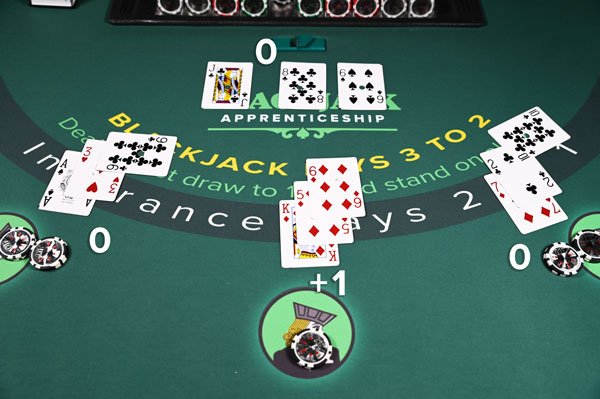High-Low Card Counting: Strategy, Benefits, And Statistics
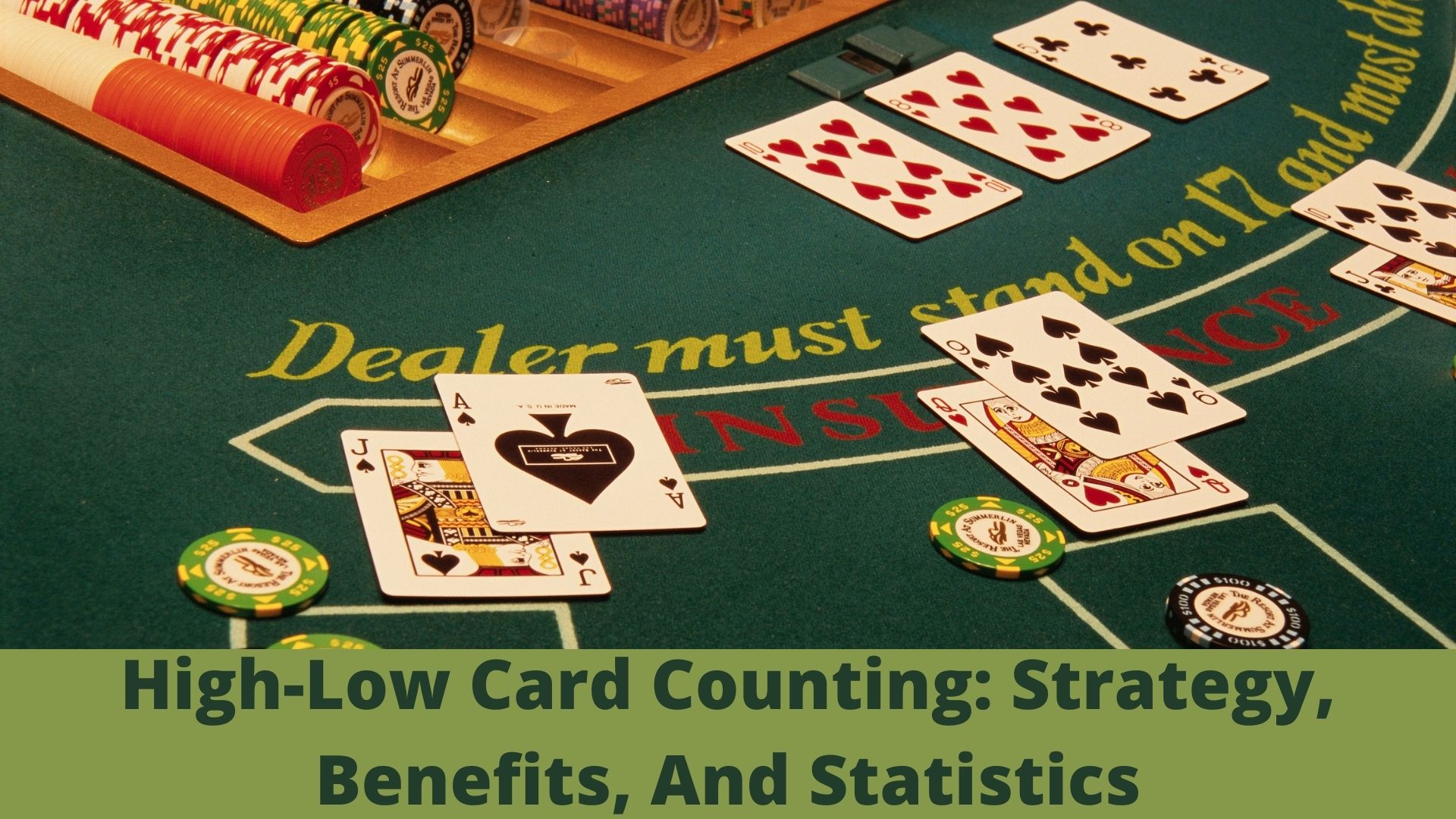
High-low card counting is one of the most common strategies. Harvey Dubner 1 introduced this strategy in 1963. Moreover, all the reporters of blackjack have been using this strategy commonly and widely. Also, the detailed coverage is by Don Schlesinger in the Blackjack attack. The best treatment was by Stanford Wong in the Professional Blackjack.
So the players use the high-low card counting strategy in blackjack. They try to take advantage of the next card. Further, this strategy depends on statistical evidence that the high cards will benefit the players, such as 9s, 10s, and aces. In comparison, the low cards such as 2s, 3s, 4s, 5s, 6s, and 7s benefit the dealers.
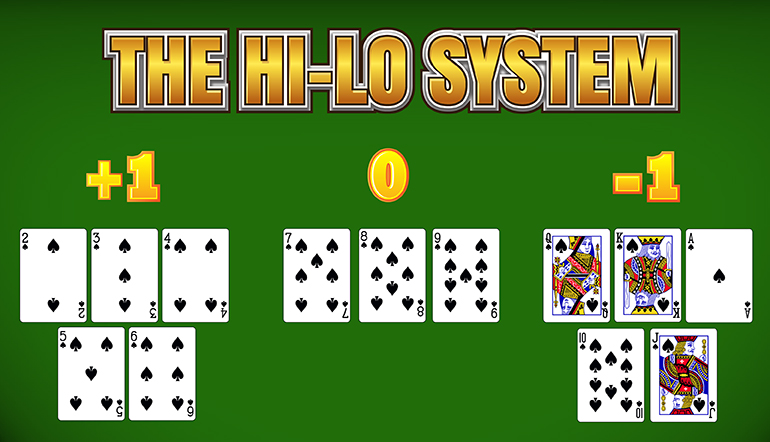
High Low Card Counting System
What Are The Benefits of High Cards For The Players?
Following are some benefits for the players:
- They increase the probability of a player hitting that pays out at 2 to 3 odds.
- Doubling down increases the expected value. The ratio of aces and tens improves the probability of successful doubling down.
- They give additional splitting options to the players.
- They increase the chances for the dealer of going bust. Moreover, they increase the odds of players busting. But the player chooses to stand on minimum totals based on the count.
- They make the insurance bets profitable. Also, it increases the dealer’s blackjack probability.
High-Low Card Counting
What Are The Benefits of High Cards For The Dealers?
The low cards benefit the dealers. According to the rules, the dealer needs to hit stiff hands such as 12-16 total. Likewise, the low cards will reduce the chances of going bust. Further, the dealer will go bust if the next card is 10.
What is The High-Low Card Counting Strategy in Actual?
You can even use this high-low card counting strategy by following these easy steps:
Assigning a Value
It would help if you assigned a point value to all the ranks. For instance, you can assign the value of +1 for ranking 2, 3, 4, 5, and 6 number cards. Also, you can assign the value of 0 for ranking 7, 8, and 10 number cards. Further, you may assign a -1 value for ranking 10, jack, king, queen, and ace cards.
Starting a Running Count
In the second stage, start with a running count of zero. Do it from the start of the deck. Moreover, when the dealer will reveal the cards, keep on adding and subtracting the running count. Further, you can do so by following step 1. For instance, if you have the first ten cards out of the deck, 3, 5, King, 7, Queen, Ace, 8, 5, 4, and 2. Then the running count will be 1, 1+, -1, +0, -1, -1, +0, +1, +1, and +1. Hence, it makes a score of +2.
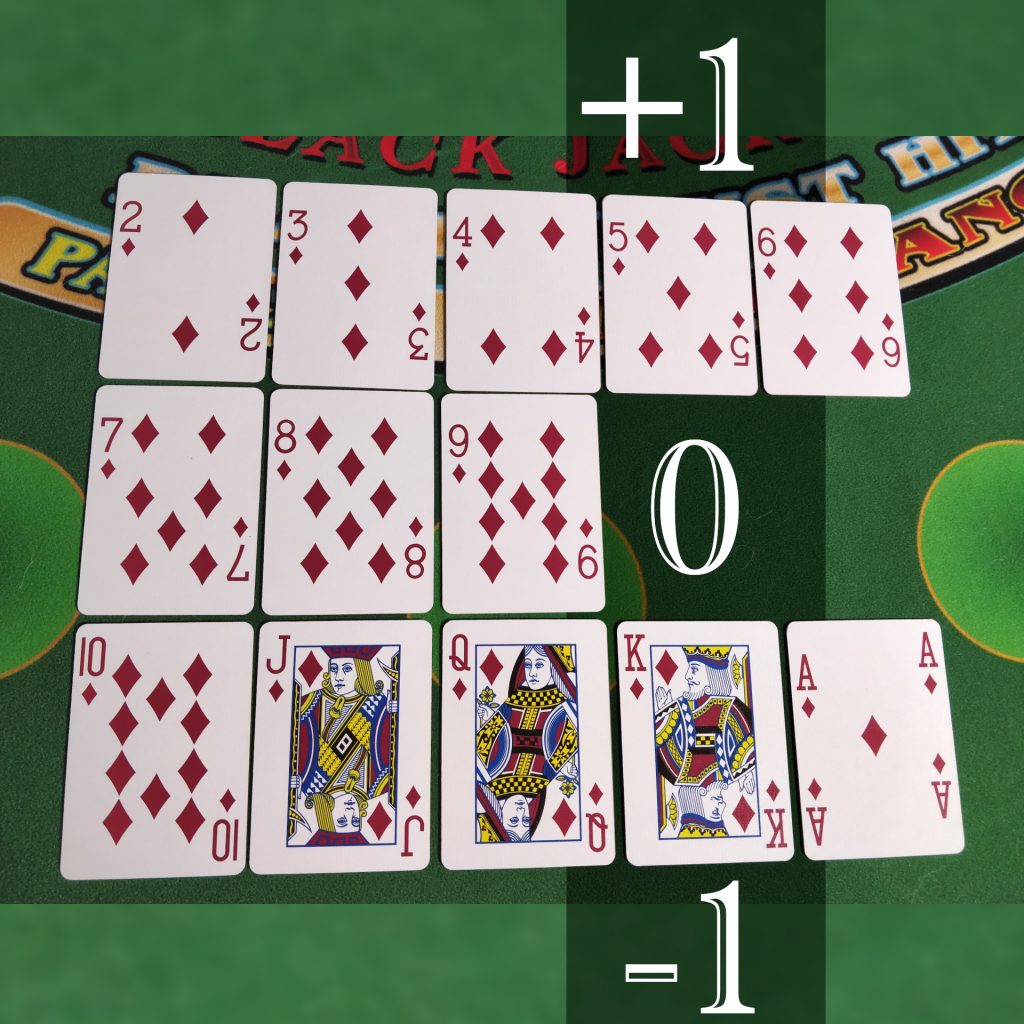
The Values of High-Low Card Counting Strategy
Dividing The Running Count
In the third step, divide the running count by the number of decks that are remaining. Hence, you will get that it is called True Count. But the counters do not like this part. Further, there is no need to count exact. So you can estimate roughly. For example, the running count is +7. There are four decks left. Therefore, the true count is 1.75. You can round it up to 2 for simplicity. Besides, you will be more comfortable when you play this many times. So when you become an expert, there is no need for the real revision in your head. Normally, the right play is clear. Further, you require to do True Card conversion in borderline cases.
When Should You Make Bets?
When you have the higher true count, you should make more bets. Hence, you will find card counting an art here. There are some stern rules and regulations for doing this task. The casino managers also have complete knowledge about it. But the patterns made in the old books are not updated and up to the mark. Therefore, it depends on how much energy you have and your own style. It helps to avoid the heat by keeping the ratio of maximum bet to minimum bet up to a certain limit. It refers to the Vet Spread. The natural look includes increasing bets after a win and decreasing bets after a loss.
The Strategy to Adopt For High-Low Card Counting
You will play as per the True Count and a table of Index Numbers for some hands instead of a basic strategy. Moreover, when you have the greater count, you can choose double, stand, split, surrender, and take insurance. For instance, the Index Number for player 15 is +4 against the dealer 10. Hence, it depicts that the player should choose stand if the True Count is +4 or greater than that.
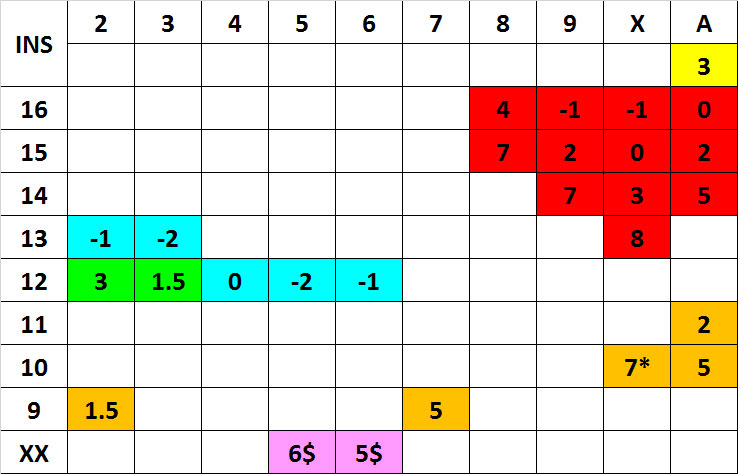
High-Low Card Counting Strategy
Illustrious 18 Tables For High-Low Card Counting
The tables related to the Blackjack Attack are referred to as Fab 4 or Illustrious 18. You need permission to republish them. Moreover, they are the most significant Index Number to keep in your mind. Based on a six-deck game, they will give the counter 80% to 85% to the value of Index Number. Besides, this difference is more in double-deck games and single-deck games. You can memorize this table also.
What Should The Players Do?
If the True Count is equal or greater than the Index Number, the player should double, split, or stand. Otherwise, he should hit. Blackjack hit or stand are two popular strategies. Moreover, if the True Count is +3 or greater, the player should take insurance. Additionally, if the True Count is equal to or greater than the Index Number, the player should surrender in this case. Besides, you can get the Index number table from appendix A of Professional Blackjack by Stanford Wong.
High-Low Card Counting Statistics
The blackjack rules depend on Liberal Vegas shoe such as:
- Dealer stands on soft 17.
- Six decks.
- Double after split is allowed.
- The player can re-split to four hands, including aces.
- Surrender is permitted.
The simulation increases the bet after a win to avoid setting off the red flags. Moreover, the simulation decreases after a loss only. It stays the same always after a push. But there is an exception of re-setting to a minimum bet after a shuffle. In addition, the simulation rounds the remaining decks to the closet half deck.
The Columns in The Table For High-Low Card Counting
Following is the detail of all the columns of the table:
Penetration
It refers to how many decks are there that the players have played before reaching the cut card. 4.5 is the normal value in a six-deck shoe.
Index Numbers
Illustrious 18 and Fab 4 run the simulations. There is no too much difference. So it depicts that having the top 22 gives you the best benefit of knowing them all.
Spread
Spread is the ratio of a player’s minimum bet to the maximum bet. Moreover, when there is a greater range, the player will get more benefits. The spread of wide bet sets off a red flag. The spread from 1 to 15 is the aggressive spread in a six-deck game.
Standard Deviation
The standard deviation shows the volatility per starting bet.
Average Bet
The player can compare the average final bet per hand to the lowest bet. For instance, if the player’s minimum bet is $100, his average bet will be $211 in the last row. Further, it requires the additional money bet because of splits and doubles.
Player Advantage
This is the ratio of the net player win to the total starting bets. For instance, the player can expect to win 1.182% of his total starting bets in the last row.
Who Created The Table?
The Casino Verite has created a table. It creates multiple statistics for betting strategies, playing strategies, and a set of rules. This software is the best for the players who want to apply these tests.
Summing Up The High-Low Card Counting
High-low card counting is the commonly-used strategy for counting the cards in casinos. There are a total of five steps to depict the working of the high-low card counting strategy. You can assign the different values for ranking the cards. Furthermore, you can get the table of all the Index Numbers from Professional Blackjack. There are various columns in the table created by Casino Verite.
-
Guides3 years ago
How to Beat the Pot O Gold Machines: Best Guide For 2022
-
News3 years ago
The Philippines President Removes Ban on Boracay Casino
-
Best3 years ago
Best long term betting strategy (2021)
-
Guides3 years ago
The Disadvantages of Master Betting
-
News3 years ago
Deadly Accident Kill Two People Near Route 66 Casino
-
Guides3 years ago
Lost Bet Games: Types, Reasons, And Experts’ Suggestions 2024
-
Guides3 years ago
How to Read the Bingo Patterns on Slot Machines
-
Guides3 years ago
Gals Sports Betting 2022 – How to Register and Play Online Sports Betting

